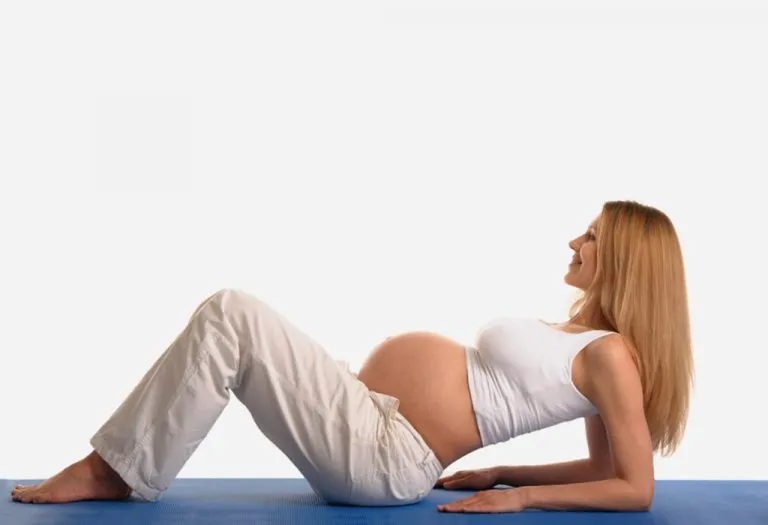C-Section Vs Normal Birth – Which Is Better?

Pregnant and looking forward to the big day? All to-be-parents are faced with the big question of whether to go with the long-followed traditional method of vaginal birth or the popularity-gaining Cesarean or C-section birth. Normal delivery is the most sought-after childbirth option, as it is safe for both the baby and the mother. While it provides various benefits to the infant, there are some issues of prolonged labour and tearing as well, which may make the couples think twice. Cesarean or C-section birth, on the other hand, is mostly recommended due to medical reasons. Since both have their own pros and cons, gaining knowledge on cesarean birth vs natural birth is necessary for the pregnant couple so they can take a suitable decision after consulting with a doctor. In this article, we will discuss the benefits and risks of both procedures, for both mom and baby.
Vaginal Birth vs C-Section Delivery
Mothers have been giving birth ever since the beginning of time when there were no ultrasound machines or even hospitals. It is now, with the advancements in technology, that mothers have an option of choosing another way of childbirth and avoiding going through long and painful labour. A comparison of a C-section versus a normal delivery gives parents important insights into their options for childbirth.
Vaginal Birth
The natural way of delivery or vaginal birth is always recommended as it offers faster recovery and is safest for the mother and the baby (1). This type of childbirth involves the birth through the vaginal canal. Having a baby in this traditional way is said to have several health benefits both for the mother and the child. Here are some points you can consider before making your choice:
1. Pros of Vaginal Delivery
Being a natural way, it is a preferred choice and has a number of plus points you should consider for both the mother and the baby.
For Mother
- The mother gets to actively participate in the process, giving her a more positive and empowering experience.
- The skin-to-skin contact during the process ensures better bonding between the baby and the mother.
- Recovery is much faster, with mothers usually being able to walk without any pain the same day, as compared to needing at least a day’s rest after a surgical method. In a week’s time, the mother is generally fully recovered from a vaginal birth.
- There is no scarring or need to take care of stitches. The number of visits to the hospital is also lower. Care will be required if an episiotomy is given, but it is relatively faster and better.
- You may also get to choose to deliver at home rather than the hospital. However, this must only be thought of after a proper consultation with your doctor.
For Baby
- When opting for a vaginal delivery, the baby is also ready to come out of the womb.
- During the process of being pushed out from the vagina, the baby’s lungs expel the amniotic fluids filled in them, allowing normal breathing and less respiratory problems (1).
- Babies born through vaginal delivery undergo fewer complications. There are fewer instances of allergies, and they also begin breastfeeding earlier.
- The baby inhales the good bacteria when coming through the birth canal, which helps in boosting the immune system.
2. Cons of Vaginal Delivery
While there are benefits, there still remain a few risks while opting for vaginal delivery that should be known:
For Mother
- With natural delivery, the time of childbirth remains uncertain, and there is no way to schedule it. Delivery is entirely dependent on the mother’s body.
- Going into labour accompanies pain and stress. There is no fixed duration of labour, either. It can be short, lasting for a few hours, or may go on for a long time. However, there are a few drugs which may help with labour and are given as per the doctor’s decision.
- Sometimes, there are complications that can lead to a drop in the baby’s heart rate (2). In such situations, the mother may be given anaesthesia and taken for an emergency C-section.
- Post vaginal delivery, there may be a few sexual problems faced by the mother due to injuries sustained during delivery.
For Baby
- Sometimes when the baby is large, one might need assistance during delivery with suction cups or forceps.
- There are some instances of the baby suffering an injury while passing through the vagina.
Cesarean Section
Cesarean, or C-section, delivery is the surgical method for childbirth. A small incision is made in the abdominal region, which penetrates the uterus, to take the baby out. C-sections can be planned after consulting with the doctor. When the mother has health conditions like high blood pressure, diabetes, or infections like HIV that makes vaginal birth unsafe, then a C-section is the preferred choice for childbirth (3). Also, if there are some problems during natural delivery, like the baby not getting oxygen or labour taking too long, then an emergency C-section is done.

1. Pros of C-section
Cesarean has become a popular choice since it has quite a few benefits. These are the pros of C-section childbirth:
For Mother
- When it is a planned procedure, it gives the parents the advantage of planning the birth.
- The mother can avoid long hours of labour by opting for a C-section. This lets the mother avoid all the stress of labour pain (4).
- The mother usually does not face any sexual problems after a C-section birth.
For Baby
- The baby is less likely to be affected by any infections being carried by the mother.
- There are fewer chances of the baby being injured during birth.
2. Cons of C-section
Besides the benefits listed above, there are a few cons that should also be evaluated:
For Mother
Like any other major surgery, C-section also carries a few risks (5):
- The use of anaesthesia adds to the risk of complications.
- There is greater blood loss.
- There are risks of infection. The care of the wound needs to be ensured, to facilitate the healing process. This also means more visits to the hospital for routine check-ups.
- The recovery period is longer as compared to that from natural childbirth.
- The breastfeeding process might get delayed, too. This can have an effect on the bonding between the mother and the baby.
- C-sections have a higher mortality rate for both baby and mother. Being put under anaesthesia increases these risks.
For Baby
- Since it is not a natural birth but is decided by the surgeon and the parents, the baby may not be prepared to come out of the mother’s womb.
- In some cases, the baby faces respiratory problems after being born.
Recommended Ways to Avoid a Cesarean Birth
- Choose your healthcare provider carefully. It helps to know the statistics of the number of C-sections done by the doctor, his/her views on both vaginal and C-section childbirth, and also the mortality rate. These details can help you make the choice.
- Hiring doulas who are professionals and experts on pregnancy and childbirth can help with additional assistance during your pregnancy and also give you guidance to induce labour with fewer complications.
- Going for birthing classes is a good idea, especially those that teach breathing exercises and give pointers on how to get through labour in a natural manner without any medication.
- Having a healthy, balanced diet and regular exercise increases your chances of being prepared for a vaginal birth.
FAQs
1. What are the factors involved in selecting the ideal childbirth procedure?
When doing the c-section versus natural birth analysis to choose the suitable option, it is important to consider the following factors:
- Medical Requirement: Normal delivery is the most sought-after childbirth procedure when all is well with the pregnancy. If there are issues like placenta previa, baby breech, or other issues with the pregnancy, then doctors may recommend a c-section.
- Risks and Complications: Both normal delivery and c-section birth have their own set of risks and complications, like umbilical cord entanglement, excessive bleeding, or infections. Consulting with the doctor about the risks and complications according to your pregnancy progress can help you decide on the best childbirth option.
- Recovery Time: C-section delivery takes a much longer time to heal than a normal delivery as it is a surgical procedure.
2. Can you opt for a c-section voluntarily?
Labour and fear of pain during vaginal birth may cause many couples to voluntarily choose a cesarean delivery (6). Although a C-section is a safe medical procedure for childbirth, it has more risks than a normal delivery. This is the reason most healthcare experts would recommend a C-section when necessary. The answer to the question is yes; couples can choose a c-section over vaginal birth after consulting their doctor. Discussing the childbirth options before the delivery with the doctor will help eliminate your doubts and fears regarding a vaginal delivery.
3. Is vaginal birth after a C-section possible?
Yes, a vaginal birth after a C-section (VBAC), but it isn’t safe for all women (7). There are several factors to consider, including the reason for the previous C-section, the incision type, and the current pregnancy’s progress. Consulting your doctor about the VBAC to determine whether it is safe for the current pregnancy is advised.
Natural childbirth vs c-section: both have their pros and cons. Before making a choice, parents should consider all the factors and consult with their healthcare provider. Although natural birth is a less invasive and traditional way, going into labour can be a painful and stressful process. Also, even after opting for vaginal delivery, there are chances of things not going according to plan, and the doctor may have to perform an emergency C-section. Natural delivery and C-section are both techniques that have been around for a while and are well-tried and tested. Eventually, the final decision is for the parents to make after evaluating all the aspects.
References/Resources:
1. Pregnancy: Types of Delivery; Cleveland Clinic; https://my.clevelandclinic.org/health/articles/9675-pregnancy-types-of-delivery
2. Vaginal Delivery; Cleveland Clinic; https://my.clevelandclinic.org/health/articles/23097-vaginal-delivery
3. Cesarean vs. Vaginal Birth: What’s Better for You and Your Baby?; Nationwide Children’s; https://www.nationwidechildrens.org/family-resources-education/family-resources-library/cesarean-vs-vaginal-birth-whats-better-for-you-and-your-baby
4. Sultana. J, et al.; An Uninformed Decision-Making Process for Cesarean Section: A Qualitative Exploratory Study among the Slum Residents of Dhaka City, Bangladesh; Int J Environ Res Public Health.; PubMed Central; https://pmc.ncbi.nlm.nih.gov/articles/PMC8835678/; January 2022
5. C-Section vs. Natural Birth: What Expectant Moms Need to Know; Cleveland Clinic; https://health.clevelandclinic.org/why-you-should-carefully-weigh-c-section-against-a-vaginal-birth
6. Caesarean section; NHS; https://www.nhs.uk/conditions/caesarean-section/
7. Vaginal birth after Cesarean; March of Dimes; https://www.marchofdimes.org/find-support/topics/birth/vaginal-birth-after-cesarean
Also Read:
Diet After C Section Delivery
Tips for Easy Labour and Delivery
Assisted Delivery (Forceps and Ventouse)
Different Types of Delivery Methods You Must Know
Was This Article Helpful?
Parenting is a huge responsibility, for you as a caregiver, but also for us as a parenting content platform. We understand that and take our responsibility of creating credible content seriously. FirstCry Parenting articles are written and published only after extensive research using factually sound references to deliver quality content that is accurate, validated by experts, and completely reliable. To understand how we go about creating content that is credible, read our editorial policy here.























